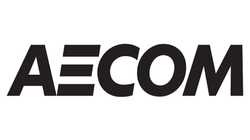The geotechnical challenge of building on dolomite in Gauteng
| The geotechnical challenge of building on dolomite in Gauteng_approved.docx | 24.34 KB | Download | |
| Kim Timm (Pr Eng), Executive – Structures, Buildings and Places at AECOM.jpg | 2.15 MB | Download | |
| AECOM encountered challenging dolomitic ground conditions at the Exxaro head office site in Centurion.jpg | 2.47 MB | Download |
From a structural consideration, dolomite needs to be accommodated in the foundation. This can be complicated and require numerous design iterations to reach an optimum solution. In addition, the ramifications extend far further than just the foundations, and this is frequently forgotten. As there are limitations on locating services within the ground on dolomite sites, the aboveground structure needs to accommodate considerably more complicated services routing and the trenches, sleeves and voids associated with such. All this needs to be designed for in your structure upfront.
For example, we encountered challenging dolomitic ground conditions at the site of the new Exxaro Head Office in Centurion, Pretoria undertaken by Growthpoint. Here we had to reshape the entire building concept to account for the highly variable ground conditions. We ultimately assessed 16 different variations of the structure with the assistance of the quantity surveyors and the architects to mitigate the underlying foundation risk in the most cost-effective manner possible.
Instead of piling, we adopted a combined soil and concrete raft approach. The structural foundation system was a 2.25 m reinforced concrete raft, designed to span a 15 m sinkhole. The raft was designed on a mattress of variable spring stiffness, adjusted for the depth to bedrock, the anticipated depth of the Weathered Altered Dolomite (WAD) and the enhanced soil mattress zone created by dynamic compaction.
What happens below ground has the ability to shape the entire building and project. If this is not considered at the beginning of the project, you are likely to have numerous surprises as you start to excavate, which invariably lead to time delays and cost overruns. It is essential to understand the nature of the ground you are building on so you can appreciate and plan for the problems you might encounter during both excavation and long term on the site.
If you have a high-water table, the viability of your basement floors could be affected. Certainly, the construction programme, waterproofing requirements and the crack control and jointing on your walls can become more costly. If your soils have a high heave potential, you might need to replace large areas of material or move to a raft foundation or implement water controlling systems or even a combination of all of these.
If you have collapsible soils, you need to understand what can be done short term in terms of wetting and compacting the ground prior to placing foundations, and the potential for long-term localised collapse. When you are building in shales, you need to understand how it can react when exposed to the air and how water can flow through the rock. This strongly affects the construction sequencing and can have time and cost implications if is are not considered as part of the upfront planning.
Geotechnical investigations should be required on all sites. The extent and detail of the investigation might vary, depending on the nature and size of the planned development. However, even the simplest single-storey structure can be rendered useless within a year by misinterpreting the underlying soils.
We cannot avoid problems under the ground, but clear and detailed geotechnical information is the best way to be able to plan for surprises that might occur. Money spent on geotechnical investigation frequently leads to money being saved during design and construction. Good geotechnical information minimizes the negative consequences of problematic ground conditions and enables projects to run smoother.
Ends
Notes to the editor
To download hi-res images for this release, please visit http://media.ngage.co.za and click on the AECOM link to view the company’s press office.
About AECOM
AECOM is the world’s premier infrastructure consulting firm, delivering professional services throughout the project lifecycle – from planning, design and engineering to program and construction management. On projects spanning transportation, buildings, water, energy and the environment, our public- and private-sector clients trust us to solve their most complex challenges. Our teams are driven by a common purpose to deliver a better world through our unrivalled technical expertise and innovation, a culture of equity, diversity and inclusion, and a commitment to environmental, social and governance priorities. AECOM is a Fortune 500 firm and its Professional Services business had revenue of $13.2 billion in fiscal year 2020. See how we deliver what others can only imagine at aecom.com and @AECOM. See how we deliver what others can only imagine at aecom.com and @AECOM.
Media Contact
Emma Anderson
NGAGE Public Relations
Phone: (011) 867-7763
Fax: 086 512 3352
Cell: 078 028 3553
Email: emma [at] ngage [dot] co [dot] za
Web: www.ngage.co.za
Browse the NGAGE Media Zone for more client press releases and photographs at http://media.ngage.co.za

